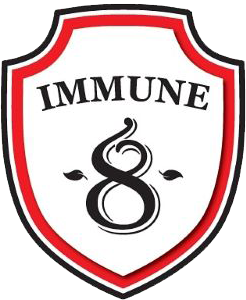First Time Buyer? Use Our 20% Discount Code: FIRSTTIME
19% Discount Special offer on Covid Code: COVID_19
What are the benefits to Cinnamon Leaf Essential Oil?
CINNAMON LEAF Essential Oil
Family: Lauraceae
Tree, 250 different species (Rao & Hua n, 2014)
Cinnamomum Zeylanicum- Ceylon cinnamon (true cinnamon) inner bark- lighter, smoother, and sweeter, less coumarin.
Cinnamomum Osmophloeum-leaf produces eugenol 70 to 95%
Cinnamomum Verum-bark produces cinnamaldehyde
Cinnamomum Camphor-root produces camphor
Cinnamomum Aromaticum/cassia/Chinese cinnamon, inner bark but strong coumarin
Safety data on Cinnamon Leaf oil states non-toxic, non-irritant, and non-sensitizing. However, different compounds from various parts of this plant can be toxic.
Historical use of cinnamon was a “symbol of independence and was a respected gift to Gods and monarchs”. Cinnamon was known to “treat malaria, diabetes, menopausal problems, headache, bad breath, digestive disorders, anemia, sinus congestion, blood circulation, scabies, intestinal infection, and GYN problems” (ayurvedicoils.com).
Cinnamon Tree for Leaf oil is mostly grown in parts of Asia, native to South Asia.
Each oil consists of many active constituents (chemical makeup) that are unique to just that plant, tree, or shrub. The chemical substances or compounds that make essential oils effective can come from these families: terpenes, aldehydes, alcohols, esters, phenolic, ethers, and ketones making them anti-microbial agents (Swamy et al., 2016). Various parts of that plant (stem, leaves, bark, resin, flowers) are used in making oil and can contain different active constituents designed by nature for protection and growth. The location in the world where the plant is grown affects its therapeutic nature as well. The mixture of the chemistry of the plant gives it the aroma. There are several ways to extract the oil. Stream distillation is known as the best method without harming active ingredients.
The cinnamon leaf produces the highest active compounds at 2 years of age. The major compound is eugenol which is rapidly absorbed in the body. Remarkable antioxidant and prevents peroxynitrite-induced lipidic peroxidation. Eugenol has anti-inflammatory properties by acting on human platelet aggregation, suppressing arachidonic acid (AA), and inhibiting the metabolism of AA.
On the other hand, Cinnamon Bark contains trans-cinnamaldehyde at 87.22% and showed anti-inflammatory, anti-diabetic, anti-microbial, wound-healing, anti-cancer, lipid-lowering, and cardiovascular protection. Research also showed benefits for neurological disorders such as Parkinson’s and Alzheimer’s diseases. Beneficial effects can be seen for anxiety and depressive disorders (Sohrabi et al, 2017; Roa & Gan, 2014). Cassia oil contains higher coumarin and can be toxic to the liver and kidneys cited in Nutrioon.com and Ranasinghe et al. (2012). Ceylon has lower amounts of coumarin.
Active chemistry constituents of Cinnamon Leaf are eugenol 70-95% and small amounts of cinnamaldehyde.
The reason for alternative ways to fight bacteria and infections was seen in the 1990s when hospital infections ranged from staphylococcus aureus, E-coli, and pseudomonas aeruginosa costing $4.5 billion. Resistance to antibiotics was seen in developing MRSA cases (Teles et al., 2019).
In conducting a systematic review of CZ in many databases registering scientific research, Ranasinghe and colleagues (2013) found in-vitro and in-vivo evidence of CZ properties of anti-microbial, anti-parasitic, antioxidant, and free radical scavenging.
Below are evidential research findings on Cinnamon Leaf oil as anti-viral, anti-fungal, anti-bacterial, anti-cancer, anti-inflammatory and other factors.
Anti-fungal Effects of Cinnamon Leaf
Study measuring effects of cinnamon Z flower and leaves against candida which can spread throughout the body of immuno-suppressive individuals. Certain microorganisms can create biofilms that make it resistant to drugs. The Blume properties are analgesic, antiseptic, anticancer, antispasmodic, coagulant, neuroprotective, hepatoprotective, gastroprotective, cardioprotective, and antimicrobial potentials. The researchers found Cinnamon Blume interfered with the candida growth in all tested concentrates and the fungus was completed eliminated after 24-hour exposure (Rangel et al., 2018).
Cinnamaldehyde has been effective against some strains of Aspergillus and A.flavus fungus. Derivatives, such as α-methyl cinnamaldehyde has shown strong activity against 38 strains of Candida (Catala’ & Ferrer, 2017).
Anti-bacterial Effects of Cinnamon Leaf
The leaves and branches of the CZ were used against a dangerous bacteria affecting honeybee brood known as American Foulbrood. A study conducted by Gende et al. (2008) showed CZ essential oil to inhibit three strains of P. larvae from three different geographical areas.
Cinnamaldehyde is highly effective against gram-positive bacteria and disturbs the gram-negative bacteria cell membrane wall to let antibiotics in. Furthermore, inhibits the growth of S. aureus, Bacillus cereus, and E-coli (Catala’ & Ferrer, 2017).
Other Cinnamon Leaf oil articles
Ranasinghe et al. (2013) systematic review of 70 articles on CZ found anti-microbial and anti-parasitic activity. Other benefits are lowering blood glucose, blood pressure, and serum cholesterol, hepato-protection, inhibition of filament formation in Alzheimer’s disease, and wound healing.
The reason “why” I added Cinnamon Leaf in my blend was because of its anti-microbial (ability to destroy viruses, bacteria, and fungi), anti-septic, and anti-depressant properties.
To Your Health & Happiness
Dr. Margie
